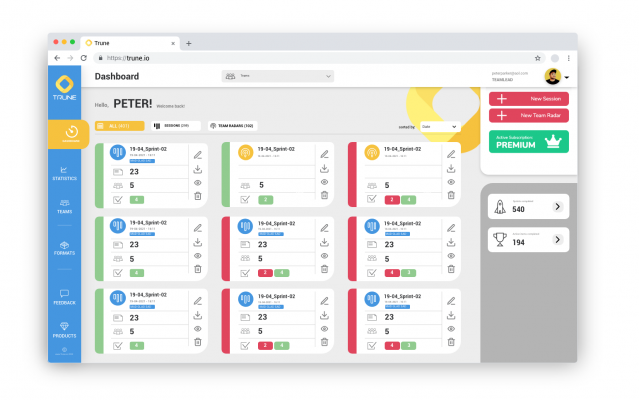This is the fifth and last post of my blog post series about the five phases of a Scrum Retrospective. In this post I cover Phase 5— Close the Retrospective.
If you haven´t read the previous posts in this series you can start with Phase 1 —Setting the stage.
These five stages are presented in the book Agile Retrospectives – Making Good Teams Great by Esther Derby and Diana Larsen. They are:
- Set the Stage
- Gather Data
- Generate Insights
- Decide What to Do
- Close the Retrospective
I use this five-step-approach as a guideline in each Retrospective meeting, which I lead as a Scrum Master.
In the previous four phases we have decided what we are going to do about the problems we identified earlier. Based on that we have created action items to improve our process.
Now, let’s finish off our Retrospective with the last phase.
Close the Retrospective
The goal of this last phase is to sum up the results of our Retrospective and generally leave a good feeling behind for the participants of the meeting.
Everyone should leave the room with the feeling that we achieved something useful and that the meeting was worth it.
How do we do this?
I usually take following steps:
- Sum up the results
- Perform a Retrospective of the Retrospective session
- Thank everyone and let them go
Step 1: Sum Up the Results
You want to recap the whole meeting in just a few sentences and remind everyone what problem we have tackled, how we are going to solve it and what we achieved in this meeting.
I keep this very short, like two or three sentences. And I use this recap as the introduction for the next step.
Step 2: Perform a Retrospective of the Retrospective Session
Here you would like to have an input from all participants what they liked about the Retrospective and what could be improved.
There are again a couple of different formats of how you can do this.
For instance, you can ask everyone to name one thing what they learned in this Retrospective. Then you give the word to each participant in the group. This way
Another option is to ask everyone to write down on a sticky note the one thing they like and one thing they would change about the Retrospective. Then everyone, one after another, puts the stickies on the board explaining what they mean.
With these activities you generally put the team in a spot to celebrate the results of the retrospective. By letting everyone explain their feelings about the meeting you make the results even more important for the team.
In my experience this bonds the team closer together and adds to the team pride. At the end of this step the participants are mostly in a good mood and that´s exaclty how you want the people to leave the room.
Step 3: Thank Everyone and Let Them Go
At this point you can end the Retrospective and let the team go back to their work place and continue with their tasks.
Therefore your final step is to thank everyone again for their time and their effort and close the meeting.
Recap
Ok, now I have walked you through the five phases of a Scrum Retrospective.
Keeping these phases in your mind while planning your next Retrospective will give you an organized way of approaching and structuring the session.
The tips I have been describing for each phase should help you to become a better Scrum Master. And the suggestions in each section should help you to avoid some common pitfalls.
But there is a lot more to learn, when you want to become better in leading a Retrospective meeting. As menioned at the beginning of the post, I highly recommend the book Agile Retrospectives – Making Good Teams Great.
It contains a tremendous amount of useful experience provided by the experts Esther and Diana. They walk you through a virtual Retrospective meeting with a virtual team and give you a lot useful insights with many example situations you might face.
In addition the book also contains a list of possible activities for each phase. These activities will help you to keep your Retrospective meeting diversified. They will also help you to avoid that your team gets bored by doing the same activities over and over again.
I can tell you from experience that, when you have read this book, you will be much more confident when planning and hosting a Retrospective session.
Retromat
Another great online resource to get inspired with ideas for activities for the Retrospective meeting is the Retromat. It contains more than 100 activities and they are categorized in those five phases. You can even choose from a couple of different languages.
The Retromat is a tool I use quite regularly when I plan a Retrospective meeting, because it gives me a lot of ideas for specific activities that can help my team to become even better.
If you know any other great resources that are helpful when preparing a Retrospective meeting, please share them in the comments.
Ok, that’s it for today. I hope you have enjoyed this series of blog posts about the 5 phases of a Scrum Retrospective.
Stay tuned, and HabbediEhre!


Great ideas and very usefull